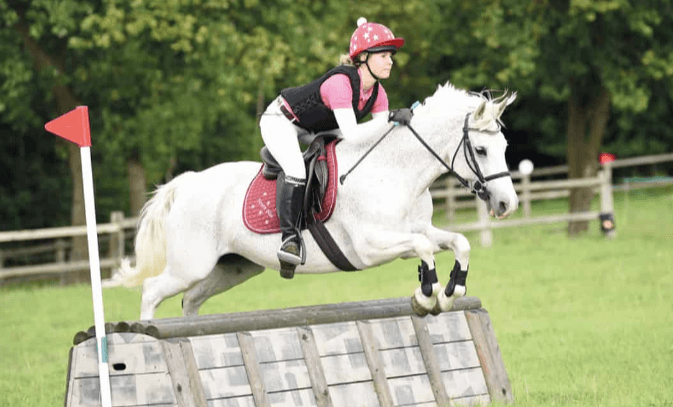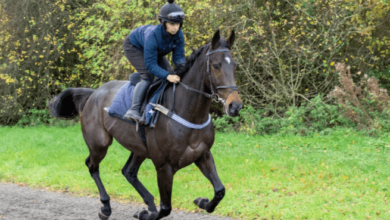What are the Different Types of Jumps in Cross-Country Riding?

Cross-country riding is a thrilling and challenging discipline in the world of equestrian sports, combining speed, endurance, and precision over natural terrain and man-made obstacles. One of the key features of cross-country courses is the variety of jumps, each designed to test the rider’s skill and the horse’s agility, bravery, and athleticism. Understanding the different types of jumps in cross-country riding is crucial for both safety and success in competition. In this article, we will explore the various jumps commonly encountered in cross-country riding, how they differ, and the techniques needed to tackle them effectively.
1. Log Fence (or Log Jumps)
Log fences are among the most basic and frequently seen obstacles in cross-country courses. These jumps are made from a solid log or a series of logs stacked together, either laid on the ground or raised to different heights. They mimic natural fallen trees in a forest, providing a straightforward, yet demanding obstacle for horse and rider.
To clear a log fence successfully, the rider must ensure that their horse maintains a steady rhythm and focuses on clearing the solid structure. Although they might appear simple, logs require the horse to jump cleanly since they are solid, unmovable obstacles.
2. Roll Top
A roll top jump features a rounded top, similar to the shape of a barrel or dome, which makes it a visually unique obstacle. This design helps horses avoid hitting their legs on the obstacle because of the rounded shape. Roll tops are often used in a combination with other jumps or as stand-alone fences and can vary in size.
The rounded nature of the roll top means horses may find it less intimidating than square fences, but they still require precision in approach and execution. Riders should maintain a consistent pace and help the horse balance before taking off.
3. Trakehner
The Trakehner is one of the most iconic and challenging jumps in cross-country. It is a combination of a horizontal rail (log or post) over a ditch. The visual gap created by the ditch can cause horses to hesitate or misjudge the jump, making it essential for riders to guide their horse confidently through.
Approaching a Trakehner requires careful control and confidence. Riders should ensure that their horse doesn’t focus on the ditch below, but rather keeps their gaze on the rail. A steady, forward momentum is key to clearing this jump safely.
4. Coffin Complex
The coffin complex is a series of three obstacles: a fence (usually a log), followed by a ditch, and another fence on the other side. This jump tests the horse’s agility and the rider’s ability to maintain rhythm through a combination of elements that require quick thinking and nimble footwork from the horse.
To navigate a coffin successfully, the rider needs to balance their horse well before each part of the combination. Riders typically slow down slightly before the ditch to allow the horse to collect itself for the final jump. Maintaining calm and control throughout is critical to avoid refusals or run-outs.
5. Water Jump
Water jumps are an exhilarating part of cross-country riding. They can range from shallow water splashes to more complex jumps involving logs or platforms into or out of water. These jumps test a horse’s confidence and willingness to jump into water, which is something not all horses naturally enjoy.
Riders must approach water jumps with a positive attitude and firm leg pressure to encourage their horse to jump confidently. Slowing down too much can cause hesitation, so maintaining momentum is key. Additionally, the slippery nature of water can affect the horse’s footing, so the rider must be mindful of balance.
6. Drop Fence (or Drop Jump)
A drop fence involves a jump that leads to a drop on the other side, where the horse must land on lower ground than where it took off. Drop fences come in various sizes and can be combined with other obstacles, such as water jumps or ditches.
The technique for a drop jump requires the rider to adopt a defensive seat, staying slightly back to allow the horse to navigate the descent safely. Riders should avoid leaning forward, which could unbalance the horse and lead to a dangerous landing.
7. Corner Jump
A corner jump is shaped like a triangle or an “open book” and presents a narrow face for the horse to jump. These jumps are difficult because of the precision required in the approach, as jumping too far to the left or right will result in a refusal or a run-out.
To successfully navigate a corner, the rider must keep the horse straight and centered. Establishing a strong line of approach is essential, as is maintaining balance and control throughout the jump. Corner jumps often appear later in a course, testing both horse and rider when they are more fatigued.
8. Skinny Jump
Skinny jumps are narrow fences that require accuracy and focus from both horse and rider. The narrow width of the jump can cause horses to misjudge the takeoff or avoid the fence entirely if not approached correctly.
Riders must ride a straight, controlled line and use their legs effectively to keep the horse’s focus on the obstacle. Like corner jumps, skinnies are often positioned strategically on a course to test the rider’s steering and control.
9. Brush Fence
A brush fence is designed with flexible material, typically made from soft, natural branches or artificial brush. Horses can jump through the brush without risking injury, making these fences less intimidating than solid structures. Brush fences often encourage boldness in the horse since they appear less rigid than other types of jumps.
The key to a successful brush jump is maintaining momentum. Because the top of the jump is forgiving, riders can encourage their horse to be more forward and take a bold leap. Brush fences are commonly found in varied shapes and sizes, including hedges and banks.
10. Table Fence
Table fences are wide, solid obstacles with a flat top, resembling a table or bench. These fences challenge the horse’s scope and ability to jump across a large spread rather than simply up and over.
When approaching a table jump, the rider should focus on maintaining a powerful stride to give the horse the best chance of clearing the width. The takeoff and landing points are crucial, and riders need to ensure their horse jumps in an arc to successfully make it across.
11. Oxer
An oxer consists of two fences placed close together, requiring the horse to jump both at once. Oxers can vary in shape and height and are designed to test the horse’s power and scope. This type of jump requires a more significant effort from the horse compared to single fences.
The key to clearing an oxer is to establish a steady, balanced canter and maintain impulsion as the horse approaches the jump. A deep, collected stride ensures the horse has enough power to clear both elements.
12. Normandy Bank
The Normandy bank is a two-step jump that involves ascending a bank, cantering across a flat top, and then descending on the other side. It is a technical obstacle that tests the horse’s balance and footwork, as well as the rider’s control.
Riders need to approach the bank with a steady pace and give their horse time to adjust to the change in terrain. The descent requires careful control and balance, particularly if the bank leads directly into another obstacle.
13. Hanging Log
A hanging log is a jump where the log is suspended above the ground, often between posts or over a ditch. This jump can be visually intimidating for horses because of the perceived space underneath the log.
To clear a hanging log, the rider must maintain a forward and confident approach. Encouraging the horse to focus on the top of the log rather than the space below is essential to avoid hesitation or refusals.
14. Keyhole (or Owl Hole)
The keyhole jump consists of a fence built into a solid structure with an opening that resembles a “keyhole” or “owl hole” for the horse to jump through. This creates a tunnel-like appearance, requiring both horse and rider to jump precisely through the narrow opening.
Riders must ensure that their horse is straight and centered when approaching a keyhole jump. The confined space can make the horse feel claustrophobic, so maintaining calm and control is vital.
15. Sunken Road
The sunken road is a series of down and up banks, often combined with other jumps before or after. It challenges the horse’s ability to handle different types of terrain in quick succession and tests the rider’s ability to manage the horse’s rhythm through the complex.
A sunken road requires a controlled approach, and riders should ensure that their horse is well-balanced. The horse will need to adjust its footing quickly as it navigates the changes in height, making rider balance and timing crucial.
In conclusion, cross-country riding presents a wide array of jumps, each with its own challenges. From the basic log fence to the complex coffin, these jumps test both the horse’s physical capabilities and the rider’s skills in navigation and control. Successful cross-country riders must understand the different types of jumps and practice the techniques necessary to handle them with confidence, balance, and precision. This combination of natural obstacles, man-made structures, and varied terrain makes cross-country riding one of the most exciting and demanding disciplines in equestrian sports.




